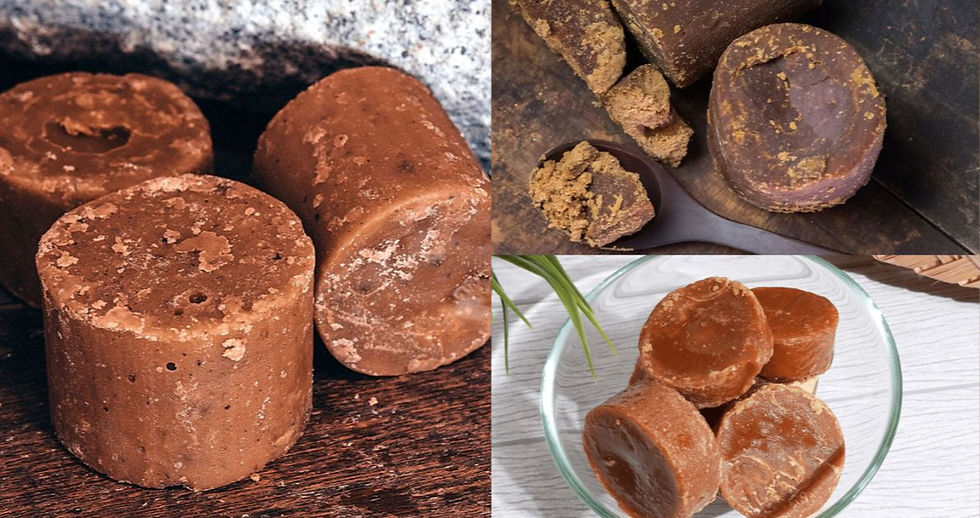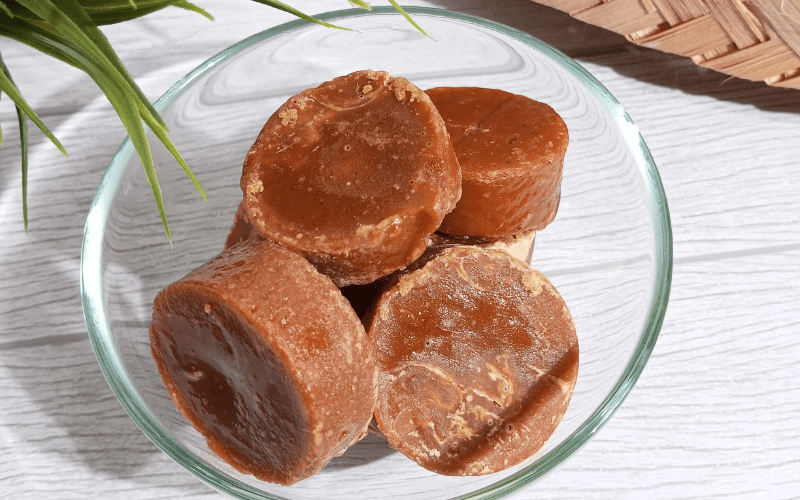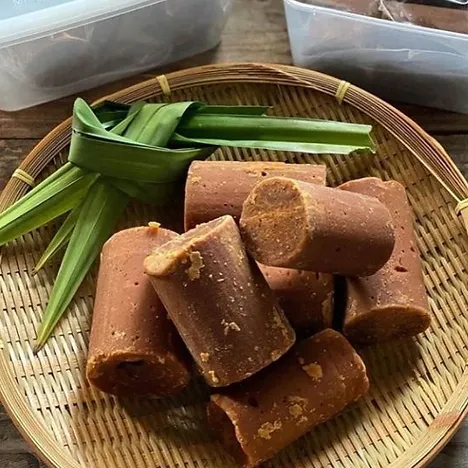Gula Kabung vs Gula Melaka: Which One is More Authentic
- Nurul Naqjwa
- Jul 29
- 3 min read
Index
Introduction
When it comes to traditional Malaysian cooking, Gula Kabung and Gula Melaka are household names.
These natural sweeteners are often compared, leaving many wondering, “Which one is truly authentic?” Both have earned a place in local cuisines, but each comes with its unique origins, flavours, and uses.
This article will take you through their differences, helping you decide which one best complements your culinary needs.
What is Gula Kabung?
Gula Kabung, often referred to as "palm sugar," is derived from the sap of the kabung tree.
This traditional sugar is crafted through an age-old process where sap is collected, boiled, and moulded into solid chunks. Known for its caramel undertones and rustic appearance, it’s a staple in kampung kitchens.
Key Characteristics of Gula Kabung:
Made from the sap of the Enau (kabung) tree.
Typically darker and more robust in flavour.
Often used in traditional desserts like kuih ketayap and pengat pisang.

What is Gula Melaka?
Gula Melaka, on the other hand, is primarily made from coconut palm sap.
Hailing from Melaka, this sugar holds a cultural heritage that locals are proud of. Commonly used in desserts like cendol and onde-onde, it is a sweeter, lighter alternative to Gula Kabung.
Key Characteristics of Gula Melaka:
Derived from coconut palm sap.
Lighter in colour with a smoother texture.
Sweet, with mild caramel notes that appeal to a broader palate.
Differences Between Gula Kabung and Gula Melaka
While both are natural sweeteners, their differences lie in their source, taste, and usage.
Here’s a quick comparison to help you identify the key distinctions:
Attribute | Gula Kabung | Gula Melaka |
Source | Kabung tree sap | Coconut palm sap |
Flavour | Bold, smoky, and caramel-like | Sweet with subtle caramel hints |
Texture | Coarser, denser | Softer, smoother |
Uses | Ideal for richer savoury dishes and kuih | Frequently used in lighter desserts like cendol |
Authenticity in Taste, Texture, and Appearance
Between the two, the "authenticity" of Gula Kabung and Gula Melaka depends on traditional context.
For deep-rooted kampung recipes, Gula Kabung’s intensity is unmatched. However, Gula Melaka might win the hearts of those looking for a subtler profile in modern desserts.
When to Choose Gula Kabung:
For dishes requiring stronger, earthier flavours.
Ideal for traditional cuisines or rustic recipes.
When to Choose Gula Melaka:
Perfect for achieving a balanced sweetness in desserts.
Often easier to work with due to its softer texture.
Choosing the Right Sugar for Traditional Dishes
The choice between Gula Kabung and Gula Melaka often boils down to personal preference and the dish being made.
For instance:
Kuih Buah Melaka pairs beautifully with the depth of Gula Melaka.
Traditional Rendang or sambal benefits from the richness of Gula Kabung.
If authenticity is a priority, consider the recipe’s origin. Kampung-style dishes traditionally use Gula Kabung, while Peranakan or Melakan recipes lean toward Gula Melaka.
Did You Know?
Gula Kabung is often moulded into cylindrical tubes, while authentic Gula Melaka is sold in small, round blocks.
Pure Gula Melaka may sometimes be substituted with cheaper alternatives made from refined sugar and added colouring. Always read labels carefully for authenticity.
Both sugars offer natural alternatives to refined white sugar and are rich in minerals like potassium and zinc.

FAQs
1. Is Gula Kabung healthier than Gula Melaka?
Both are natural sweeteners with minimal processing, making them healthier than refined sugar. However, Gula Kabung is often considered slightly more nutrient-dense.
2. Can I use Gula Melaka in place of Gula Kabung?
Yes, but the flavours will differ. Gula Melaka is sweeter and milder, while Gula Kabung has an earthier, bold taste.
3. How can I tell if Gula Melaka is authentic?
Look for labels stating 100% coconut sap with no added sugar or artificial colouring. Authentic Gula Melaka will smell sweet and caramel-like.
4. Which sugar is better for making traditional kuih?
This depends on the recipe. Kuih like onde-onde work best with Gula Melaka due to its sweet, melting properties, whereas Gula Kabung suits heavier desserts.
5. Where can I buy authentic Gula Kabung and Gula Melaka?
You can find them in local markets or specialty stores. Online platforms like Shopee and Lazada also stock authentic options.
Promotion & Call-to-Action
Looking for premium-quality Gula Kabung or Gula Melaka to elevate your Malaysian dishes? 🥥🍬 Don’t settle for anything less than authentic! Visit our store or WhatsApp us for exclusive deals today.
















Comments